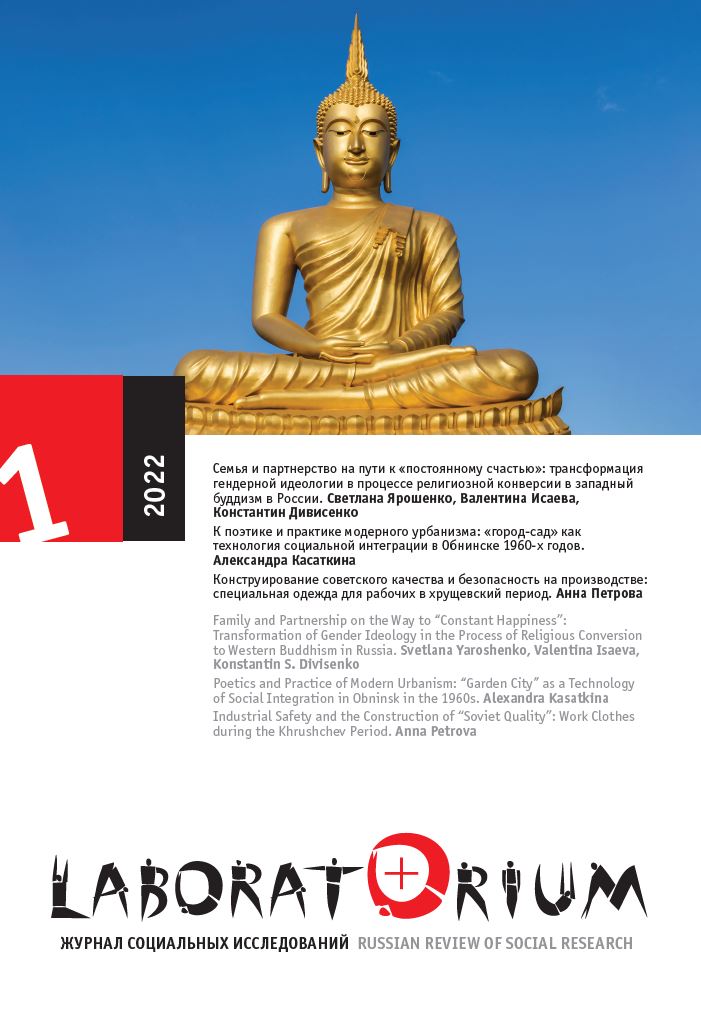Poetics and Practice of Modern Urbanism: “Garden City“ as a Technology of Social Integration in Obninsk in the 1960s
Main Article Content
Abstract
The article, based on newspaper materials and oral recollections about Obninsk, the city of atomic science in the 1960s, explores how the Soviet ideology in its postwar version functioned in a small community of a newly built city, where the task of creating both an urban space and urban social environment was of paramount importance. Following the ”third wave” of Soviet studies, the author “takes seriously” Soviet ideological clichés and such activities sanctioned from above as volunteer tending of urban green spaces and amateur gardening. Using the poststructuralist interpretation of discourse by Ernesto Laclau and Chantal Mouffe, the author identifies two main discourses, each offering its own version of urban sociality and urban identity, and both being components of the Soviet urbanism of the 1960s. The “garden city” discourse is formed by gardening metaphors, institutions, and activities. In this discourse, a city resident is any person involved in the care for urban space and, above all, in growing trees and flowers in communal spaces. The articulations of this discourse are presented in abundance in the Soviet public space of the 1960s. The data shows that participation in such activities gave some Obninsk residents a significant experience of collective activity, in other words, it played a significant role in creating the sociality of the young city. The “city of science” discourse is specific to Obninsk, the city of scientific and technical intelligentsia. Within the framework of this discourse being a city resident means being an expert in the field of science and technology and offering one’s own ideas about how the growing city should look like. Both discourses referred to the utopia of communist urbanism, but emphasized its different aspects, namely, social and technological ones: unity in a common concern for one’s living space and scientific and technological progress that should provide the means to create a communist Garden of Eden.
Article in Russian
Keywords
Soviet ideology, 1960s, Garden-City, Discourse Analysis, Obninsk, City of Science, Nuclear City, Soviet Urbanism
Abstract 429 | PDF (Русский) Downloads 485


